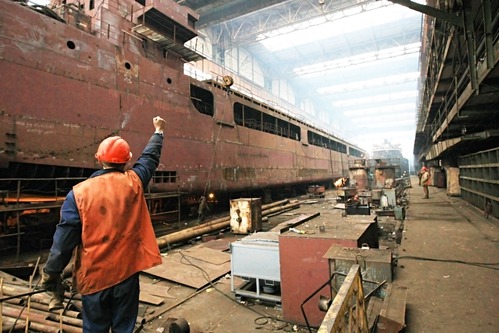 The 2016 presidential campaigning contained a great deal of commentary about bringing jobs back to the US; manufacturing jobs in particular. Harry Moser, the president of the Reshoring Initiative wrote a lengthy article in late October, “Reshoring: The Trend from Globalization To…” which gives an excellent update on the United States’ reshoring situation.
The 2016 presidential campaigning contained a great deal of commentary about bringing jobs back to the US; manufacturing jobs in particular. Harry Moser, the president of the Reshoring Initiative wrote a lengthy article in late October, “Reshoring: The Trend from Globalization To…” which gives an excellent update on the United States’ reshoring situation.
This is a summary of that article:
“One of the hottest topics in the election campaign has been the offshoring of jobs and whether to support the Trans-Pacific Partnership (TPP) trade agreement. The Reshoring Initiative’s 2015 Reshoring Data Report shows that rapid job loss has been stemmed, indicating that globalization has peaked. The emergence of localization and regionalization as a preferred business model is good news for the reshoring trend. Challenges still remain for the U.S. to bring back the three to four million manufacturing jobs still lost to offshore, but considering the progress already achieved, plus the more level playing field that will develop with, hopefully, the new president, we predict that there is much more reshoring to come.
From the manufacturing employment low of February 2010 through the second quarter of 2016 more than 265,000 manufacturing jobs have been brought from offshore, about 30 percent of the growth in manufacturing jobs in that period. The annual count was off 6 percent from 2014 due to recently stronger headwinds such as: a very strong dollar; low oil prices and shipping rates; and most competitor countries having weaker economies than the U.S.
Recently, FDI (Foreign Direct Investment) has been stronger than reshoring. Both trends are based on the logic of producing in the local market, generally known as localization. One reason FDI has a higher number of jobs is definitional. If a U.S. company, e.g. GM, expands production in the U.S., we consider it expansion due to market growth, and we do not count it as reshoring unless the jobs were specifically brought from offshore. However, we count all job increases by foreign companies (Toyota, for example). Also, foreign companies, especially the Japanese, appear to have a better understanding of the lean benefits of local sourcing.
For the second year in a row the number of jobs returning to the U.S. equaled or slightly exceeded the number of jobs leaving. By comparison, in 2000-2007 the United States lost, net, about 220,000 manufacturing jobs per year to offshoring. The steady decrease in the net number of jobs lost per year, from 220,000 to zero, is consistent with the Labor Department’s job statistics. Manufacturing employment as of December 31, 2015 is about 2.3 million higher than a regression curve from 1997, the beginning of the greatest offshoring surge, to 2009, the beginning of the reshoring surge, would forecast. Clearly we are offshoring less and reshoring more.
Of particular interest are the reasons companies give for reshoring and FDI. Government incentives, proximity to customers, and skilled workforce topped the list in 2015 for positive reasons to bring work here. At the same time, companies cited lower quality, supply interruption (this category had the largest increase from 2014, perhaps due to the west coast dock labor dispute), high freight costs and delivery as leading problems offshore. Cumulatively since 2010, rising offshore wages and total cost have been the major drivers of reshoring decisions”.
To read the entire article with its charts and graphs, which we highly recommend for those of you interested in reshoring, here is a link: https://industrytoday.com/article/trend-globalization-localization/

